Unlike the trip in 2014, I had rather less interest in lolly-gagging along the two-lane blacktops heading out East. While that can have its charm, the two-lanes were destined to be my way back to Indiana. My experience in '14 with distances traveled versus time spent travelling was such that I had decided earlier that it would be better to simply "go" this time, and put most of the miles under the car via interstate highway, so that I could enjoy the destination, rather than the travelling.
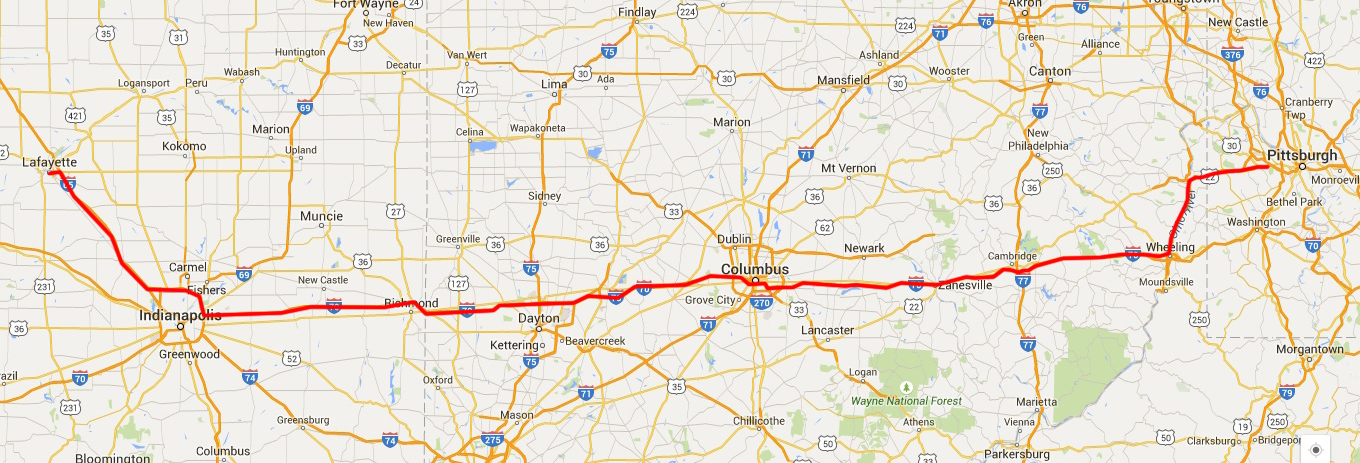
The first leg, Lafayette to Pittsburgh, was given over primarily to the Eisenhower System: I-65 to I-70 East. The exception to this is the last hour or so of the drive, when I leave the Interstate at the Ohio River near Wheeling. My favorite motel in the Pittsburgh area is on Hwy 22/30 near the Robinson Township retail cluster; I found in 2014 that it's a bit less frustrating to take Ohio Hwy 7 from Bridgeport and then pick up US 22 at Steubenville then head East into Pennsylvania. This way I can mostly avoid heavier traffic until I'm practically at the motel door.
In a kind of foreshadowing, the exit to Hwy 7 from I-70 was closed for construction. "Damn orange cone season!" I muttered. Orange cones would be, I found soon enough, everywhere.

Near Dayton, OH, and the Wright-Patterson Air Force Base, was at least one large air-transport flying about. I'm still a like a kid when planes appear overhead. I want to watch the plane! Especially if it's big, or fast. Or old, or - yeah, you get the idea.
In Pittsburgh, the following day, I went 'round the "Strip District" for a time. I had only ever taken a few photos of the Strip, and wanted to fix that.

Looking up Penn Ave, near 18th Street
As I understand it, the Strip district was, starting some time in the 19th Century, primarily wholesale vendors supplying the markets, restaurants, and hotels around Pittsburgh. Boats on the Allegheny River, and later rail road transport, would bring in the bulk merchandise, which the merchants of the Strip would then distribute to their customers. With the rise of retail commerce, though, someone had the idea of opening up street-front shops with cash registers for the general public, and by the latter quarter of 20th Century, the Strip had become "destination shopping."

Italian, Greek, and Asian outlets of varying size, artisanal shops, tchotchke purveyors (The Terrible Towel!), and locally and nationally owned restaurants rub up against fresh produce sellers, antique stores, and at least one fresh sausage manufacturer.
Pennmac: deli delights among other things.
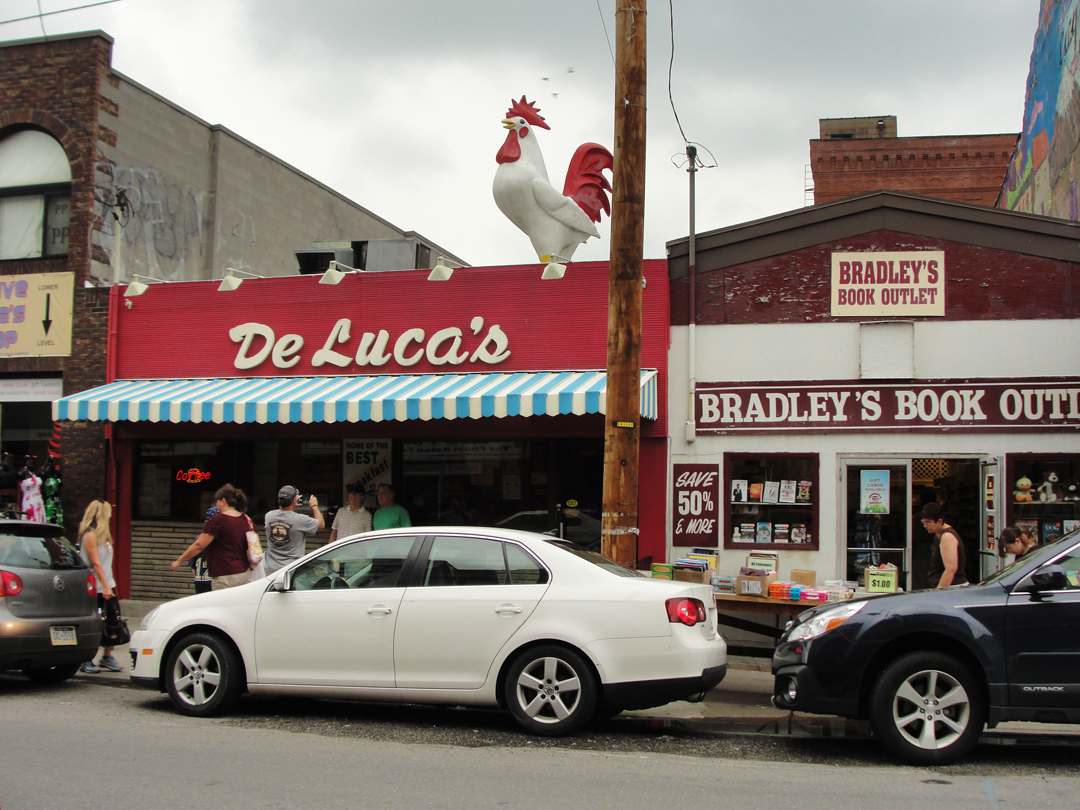
De Luca's has a sign on the sidewalk proclaiming "Best Breakfast In Town," and they may well be right. Unfortunately, I was too late to eat there on this trip; they had closed just before I took this.
Most of the establishments along the Strip are still housed in older buildings, which does give the area a rough-about-the-edges effect, though that doesn't keep Pittsburghers away. In fact, it probably makes it more appealing. The old buildings don't necessarily mean that the prices are low, though; I once (once!) stepped into the antique store in the building pictured below, and saw pretty readily that they thought very highly of there items. Ironic that the building had housed a charity.

In the background, beyond that one-time charity building, can be seen the long, low profile of what had been the Pennsylvania Railroad Fruit Auction and Sales building, behind which were the multiple tracks put down by the Pennsy System. Some of the trackage is still in use, though much of the land is now semi-trailer parking and auto parking lots. The Auction building is now subdivided between various concerns, including wholesale flowers and a hands-on art gallery space.
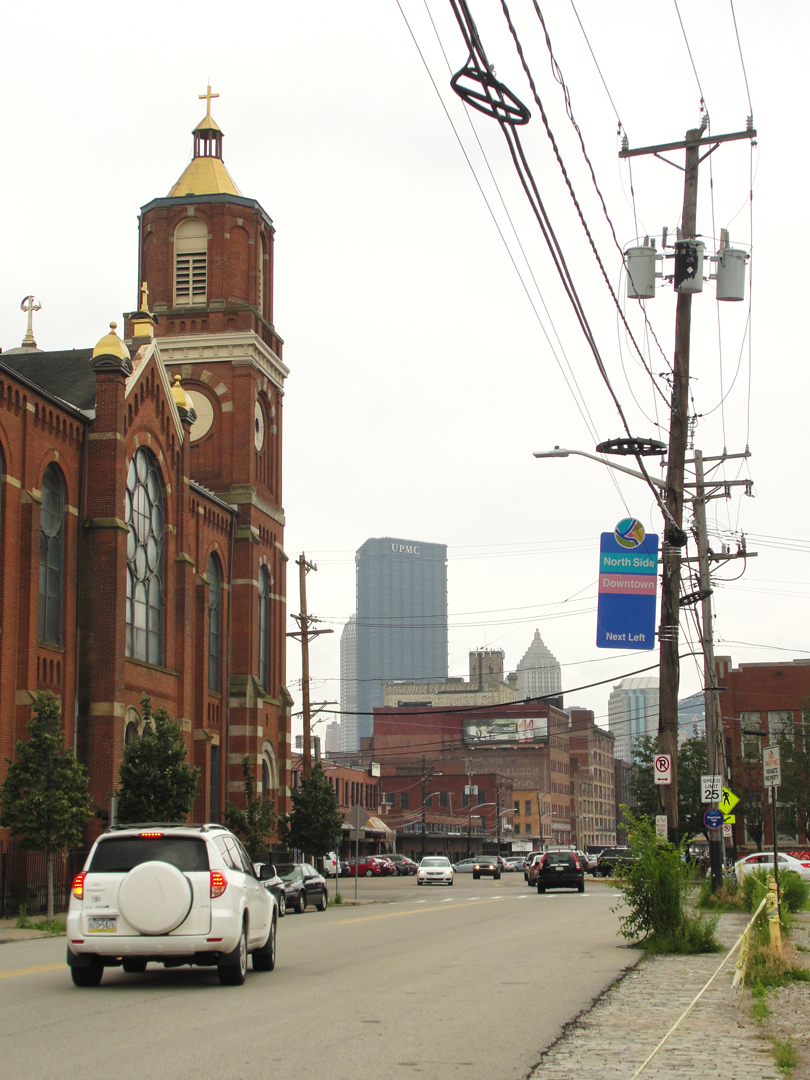
At left can be seen a stretch of Smallman St., looking toward downtown. The church is one of many "old line" churches that still exist in the area.
I once overheard a conversation on Penn Ave., where some out-of-town friend was wondering "What happens if you're shopping on the Strip and it rains?" The answer: "You get wet!"
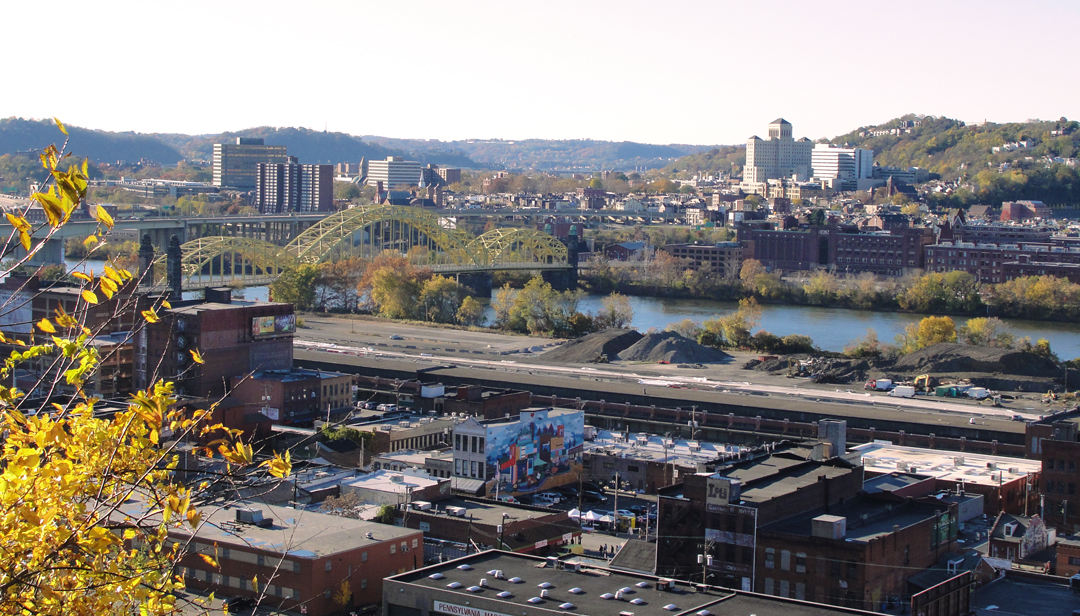
From November of '14: overlooking a short stretch of the Strip District and Allegheny River, with a view toward Pittsburgh's Northside neighborhood. In the middle distance, spanning the river is the 16th Street Bridge, which lands adjacent to the old Heinz (yes, Heinz as in "57 Varieties;" that Heinz) complex of buildings; the tall building to the right on the Northside is the Allegheny General Hospital.
My plan for the trip had always been a second night's "lay-over" in the 'burgh, which meant that I was able to attended a play produced at Carnegie's Off The Wall Theatre: Brewed. An interesting look at some strange lives of several sisters who spend their time stirring a pot that - what? Keeps a sister alive? Or does it keep them all from going crazy? Of course the sisters are all of differing attitudes and aptitudes. Strange show, but well done. A late bite at a local watering hole with friends Ken and Jill, to the sounds of a raucous Irish/American band, finished the night. (Just for the sake of clarification, that's Carnegie the municipality, not Carnegie the major university.)
Yes, I do have a fondness for the 'burg, and leaving it is always accompanied by the proverbial tug at the heart-strings. Still, when it's time to continue the journey, one goes.

This time, the journey proceeded South-East, my having had the idea of visiting Fallingwater, the Frank Lloyd Wright designed house nestled among the vales and trees in Somerset County. Leaving plenty of time to cover the distance, I headed out of Pittsburgh on PA Hwy 51, which winds along many a creek valley bottom, and is lined with enough "zoned commercial" establishments to make the head spin. Down the highway a ways I missed a turn (which would become commonplace in the coming days) and found myself heading not for Fallingwater, but for Uniontown. Passing an intersection, though, I thought "Hey, that looks familiar!" and I doubled back to do a bit of looking about.
Sure enough, I had been down that road - Smock Road - many times. At one time I was a vending company delivery driver, and Smock Road was on one of my routes. Not unlike Dreiser, I think now, winding his way into Warsaw, my drive over this blacktop was weirdly familiar; it had been well over 10 years since last I drove Smock, but the view looked as if nothing had changed. I knew where to turn, on to Rowe's Run Road, and then I saw what had been my destination: the small office building of a company purveying propane.
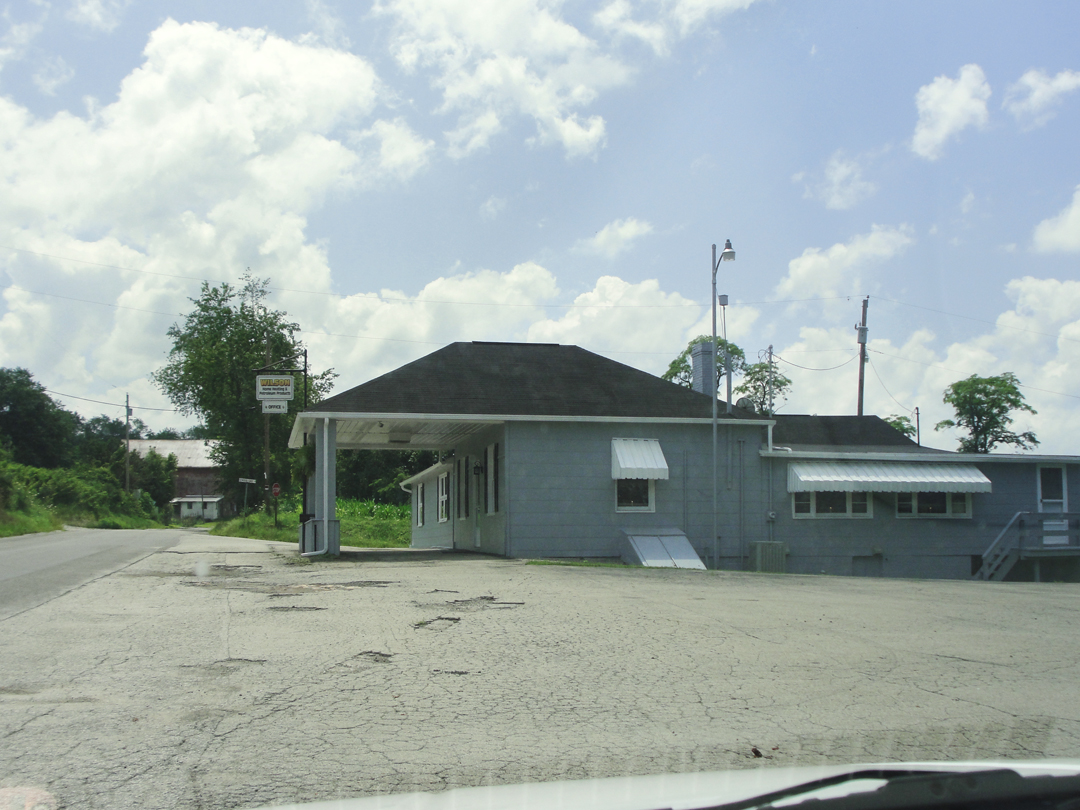
Aptly enough, it sits at the intersection of Rowe's Run and Center Gas Roads.
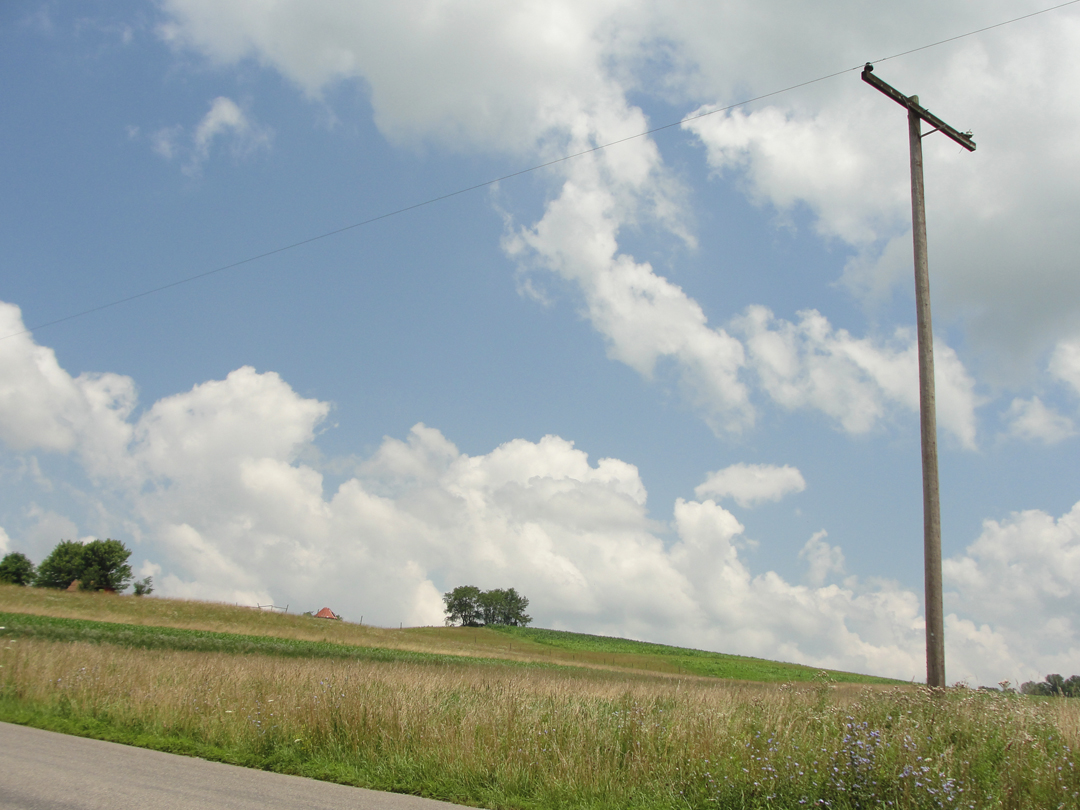
And there it is: another one of those photographs that I am always looking for.
The gas office sits surrounded by rural fields, and as it happened, this day shaped up to be mostly sunny, as if I need more inspiration to turn my camera thus.
The (composite) photograph looking over Connellsville, at the head of this page, was taken on this drive, from the gas office to Fallingwater.
Fallingwater was built to be a "get-away" place. Edgar J. Kaufmann, Sr., owner of the Kaufmann's department store, and his family utilized the Wright designed structure for weekends and holidays, and according to one tour guide also had employees of the store down to enjoy some fresh air. Edgar, Junior, deeded the house to the Western Pennsylvania Conservancy in 1963, in whose trust it has remained. It is "the only major Wright work to come into the public domain with its setting, original furnishings and artwork intact." And it is stunning. I visited one other time, some 12 or 13 years ago, while the Conservancy was in the process of reinforcing the structure. Seemed like it was high time to see it again. Alas (for me), the Conservancy has restricted the taking of photographs to the exterior, which then are further restricted to "personal use only:" no extra prints, no publishing to web sites, without express written permission. Interior photography is only allowed during their extended tours, and the other restrictions still apply. SO - hmm - someday maybe!
I can say that, having taken, or attempted to take, a few photos (yes, of the exterior) I understand why that iconic shot of the house over the falls is as iconic as it is: not only does it show the house ideally, cantilevered over the stone and falling water, it is also nearly the only angle where the majority of the house is visible! Within the restrictions then:

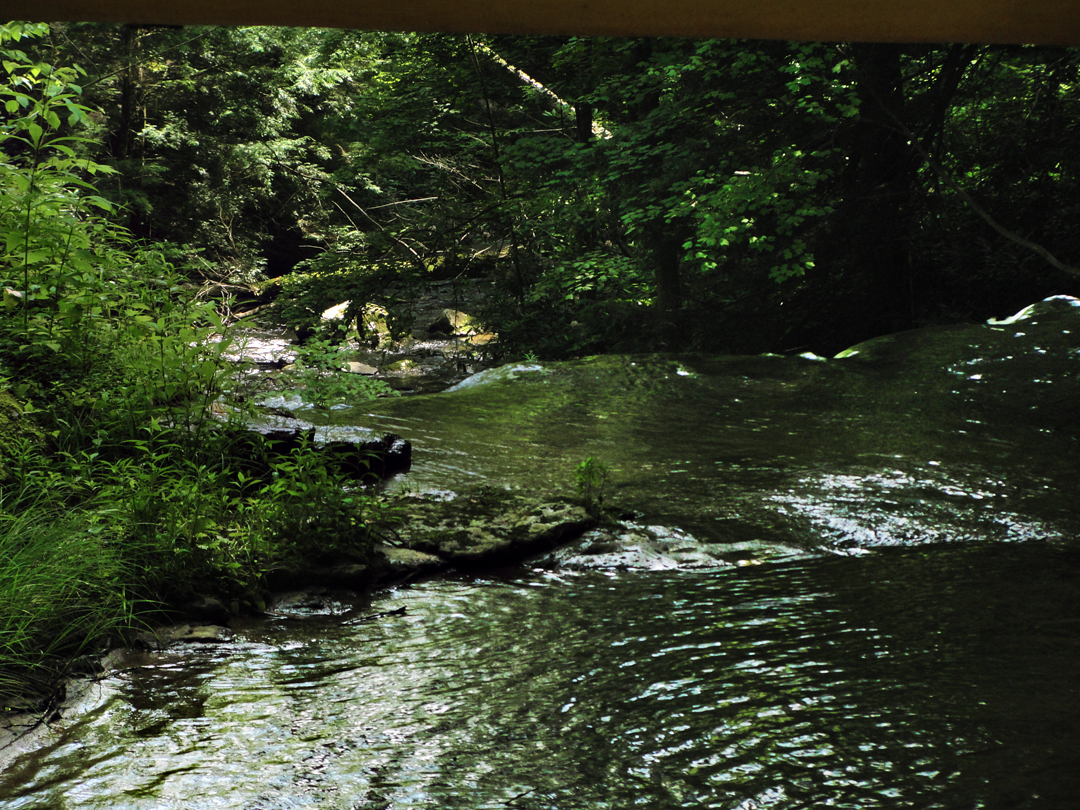
Two views of the falling water. At left are the falls - sans house - from a little knoll above the creek that has simply been named "The View" and is near to where the iconic photographs were taken. At right is the creek from upstream of the house, looking down under the cantilever. For official images of the house in its setting, the Conservancy's site fallingwater.org has a nice slideshow on the homepage.
I over-nighted in Carlisle, outside Harrisburg, as I had done in '14. The clerk at the motel was nice enough to obtain some Google directions to the Harrisburg rail road station for me, after I mentioned that it was my next immediate stop. I had driven quite around it on last year's trip, and did not want to miss it again. I had stood on its platforms during train lay-overs on several Amtrak trips between New York and Pittsburgh in the past, but had not seen the street side until now, nor been able to photograph the interior:
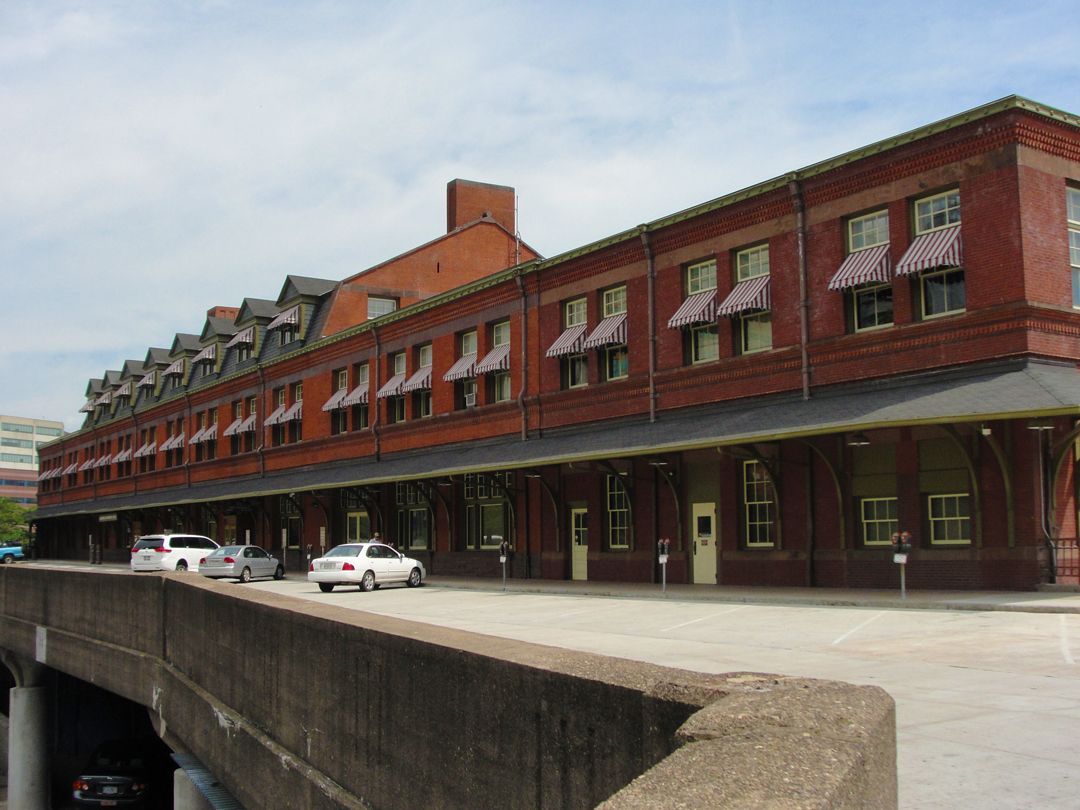
O.K., it's not much, but it's still an old Pennsy station, and that's good enough for me.
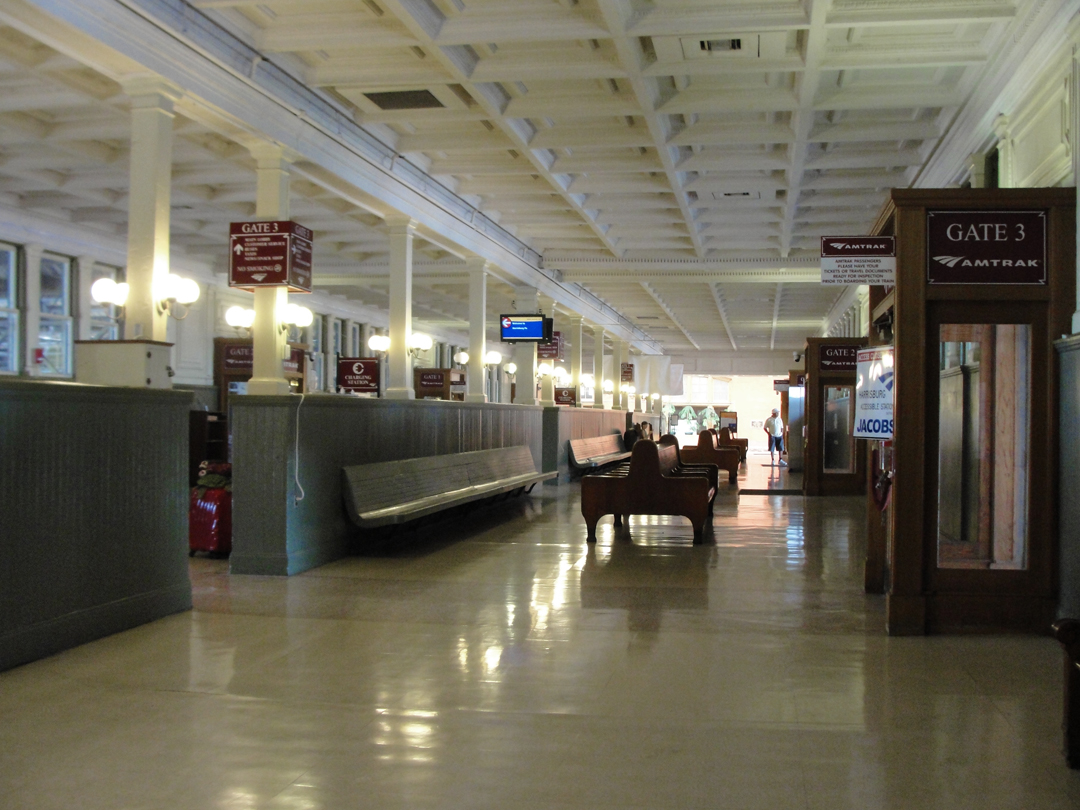
The waiting area over the platforms. Through the doors at the gates, passengers descend to the waiting trains.
Of course, being something of an "infrastructure junky," I also took photographs of the shed and its structures:
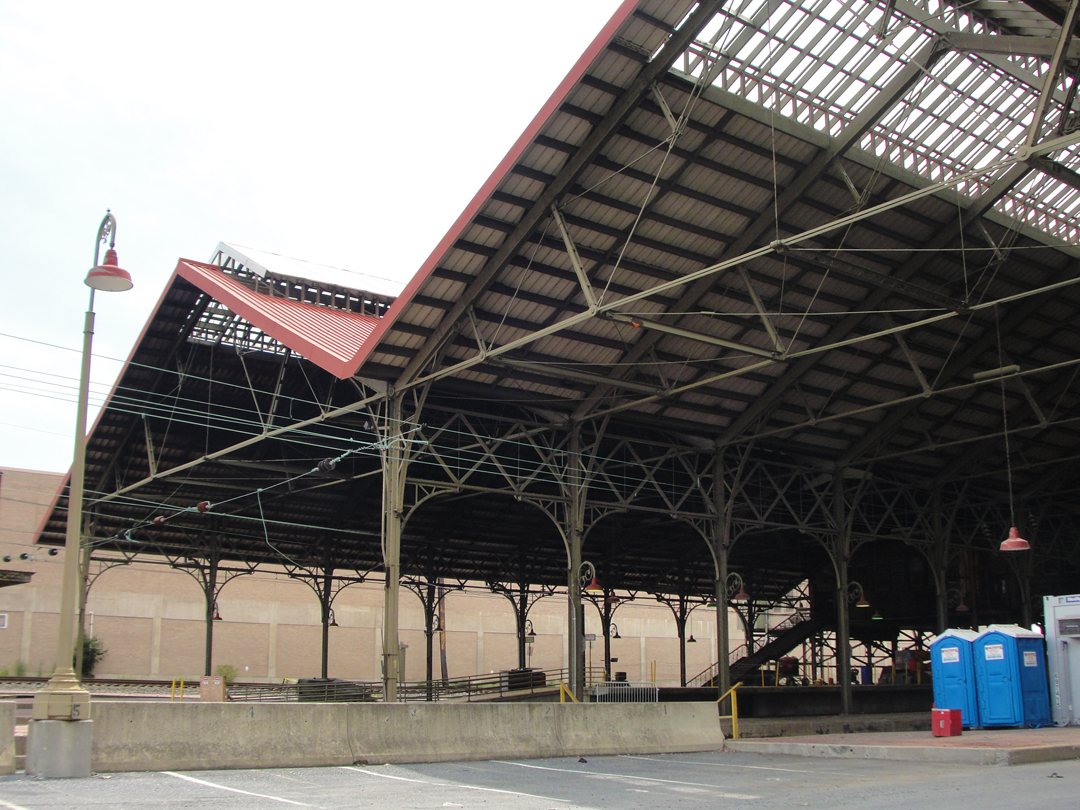
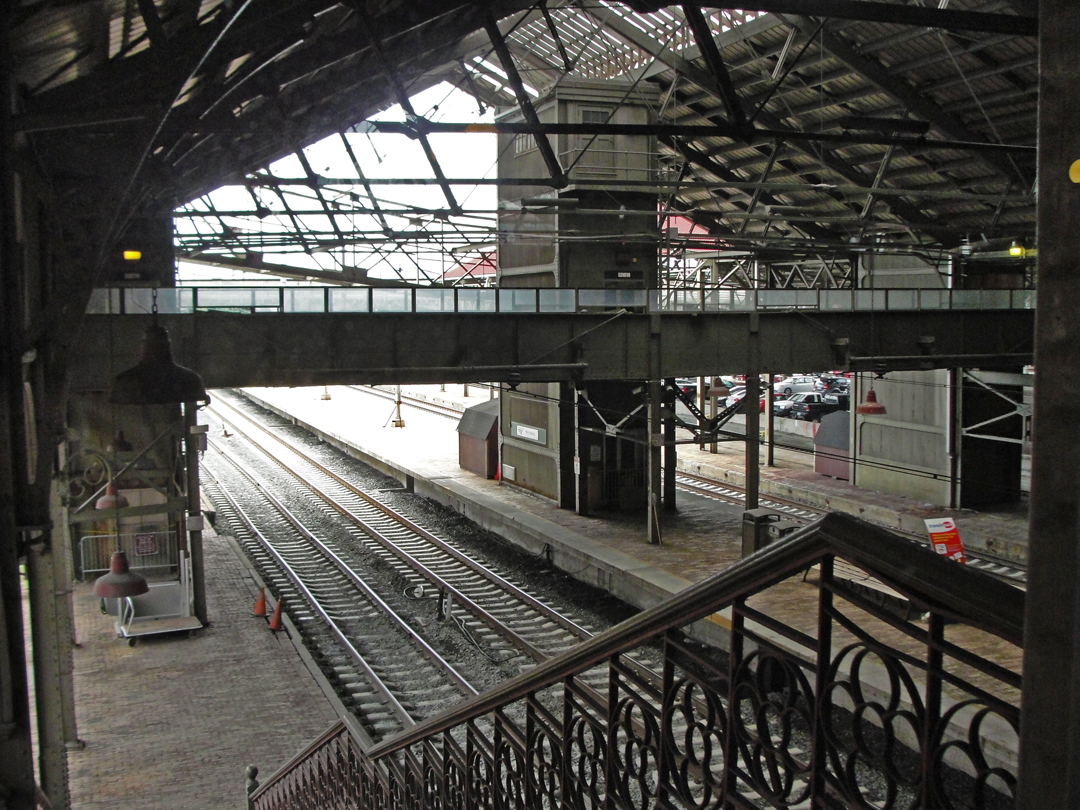
On that very platform to the left, I think, I stood as the train idled, waiting for its scheduled departure. Amtrak built in a 30 minute layover in Harrisburg on the Pennsylvanian Route, which I think was to allow for delays coming through the Eastern portion of the trip. There were a couple of instances when the train only stopped long enough to take on new passengers.
After Harrisburg, it was back toward the Interstate, and on to Jersey, with this as a parting shot:
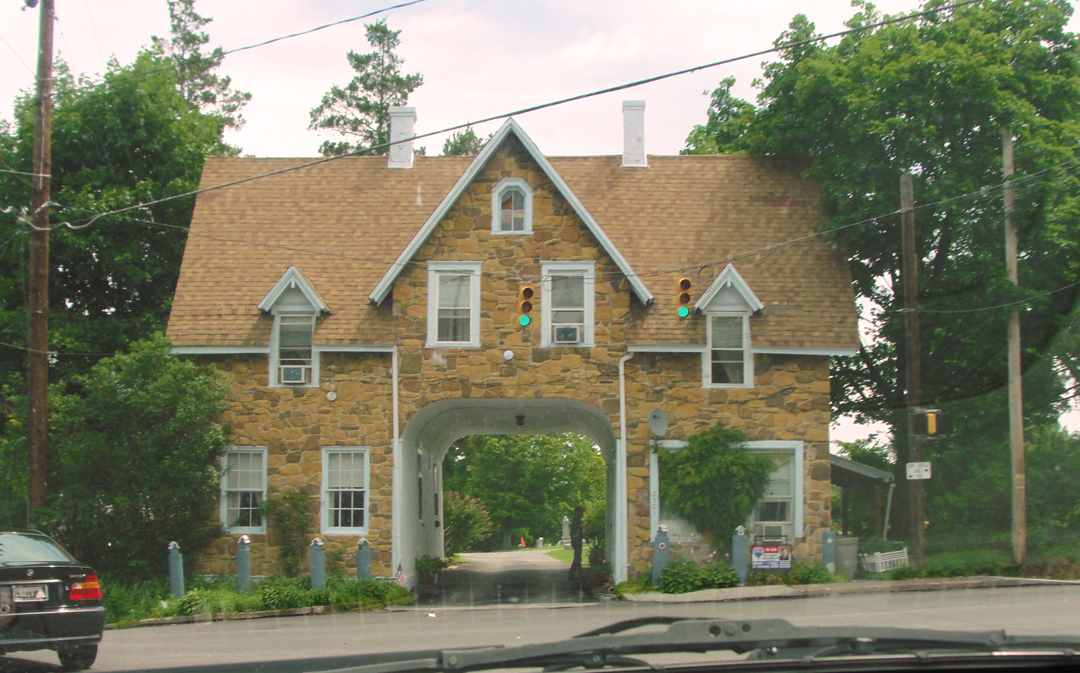
North and East of Harrisburg center was this house-and-gate entry to a cemetery. It just begged to be photographed, so I did. A bit of - ahem - online searching (Google map anyone?) revealed this to be at Prospect Hill Cemetery. I do believe that is a Re/Max realtor's sign at the edge of the sidewalk; wanna buy a caretaker's house?
